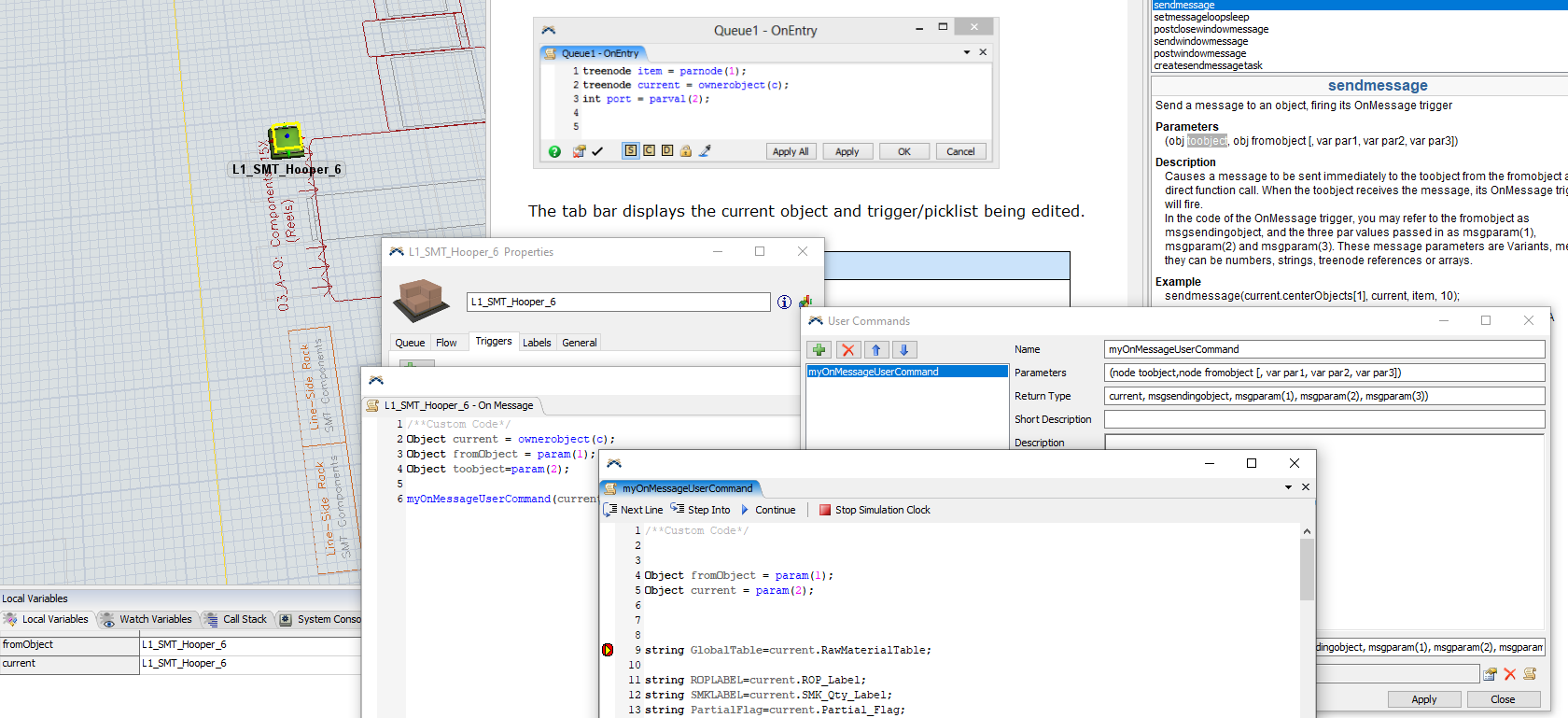Hello All,
Im trying to do a user command onMessage trigger but I cant find the proper parameters and the proper way to do it, looks like that dont work due once is reading the local variable is like the current is the model itself instead the specific object that im sending this(to Object).
Could you please send me a short example in order to understand better:
-Parameters
-Return Type
Please refer to the image that im triying to do and if you can let me know what is my mistake i really appreciate.
In the first image i show how im calling the "userCommand" and how i create the parameters

second image show the variable the current like the "model" instead to the object that i need.

third image show the error that is making the system console.

thanks a lot for the support.


